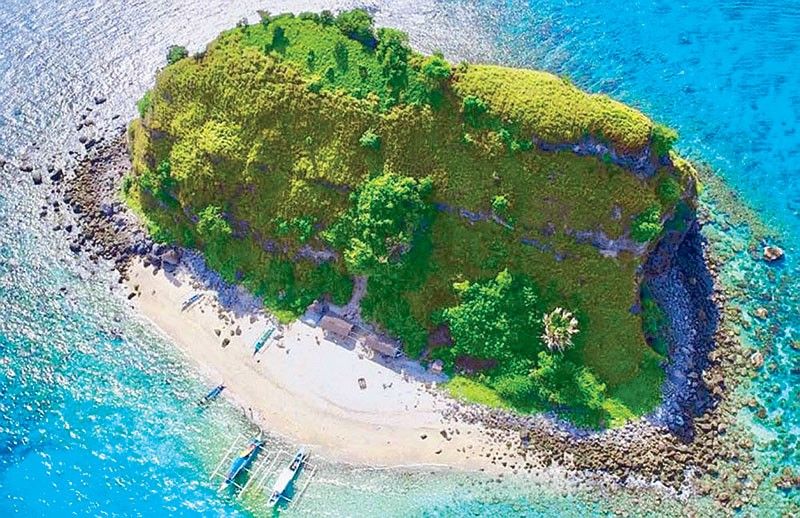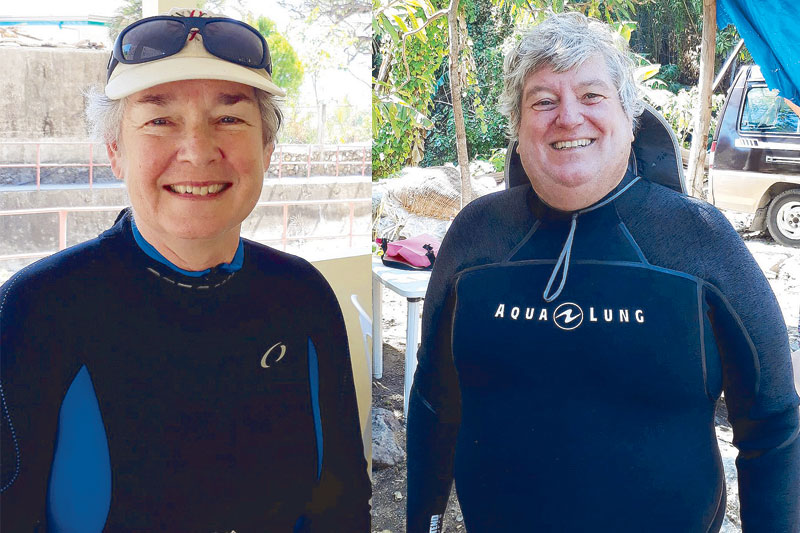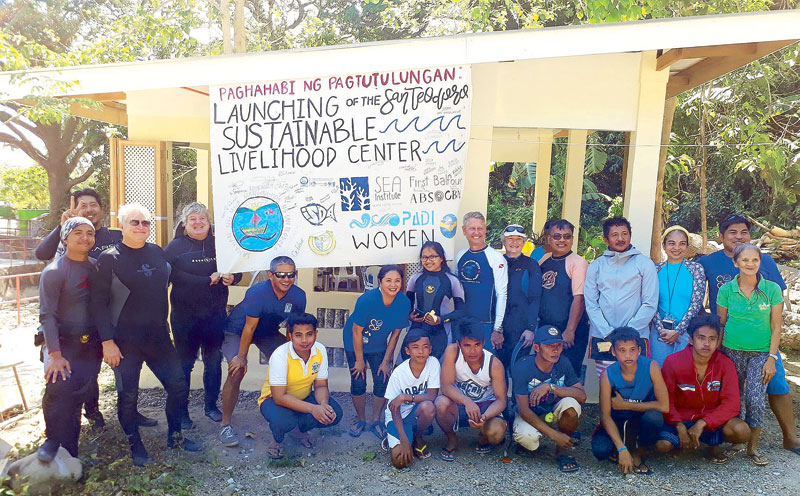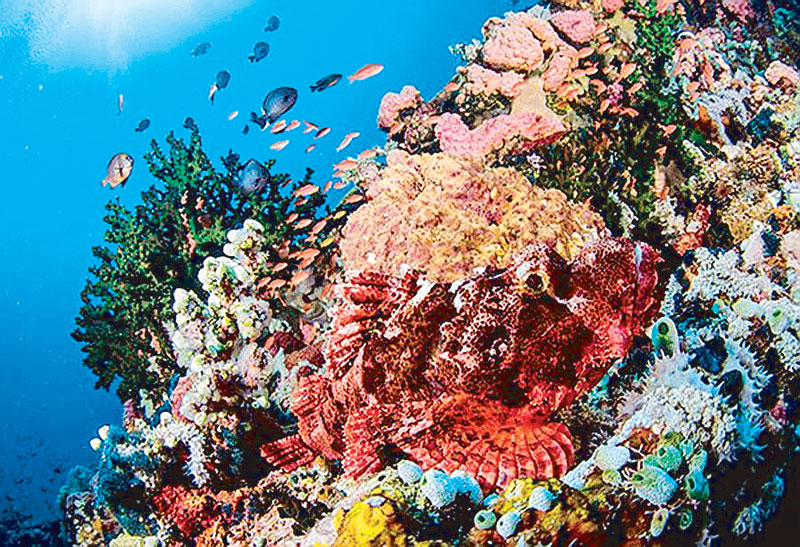Looking for Isla Verde

Journey to the center of the center of biodiversity
MANILA, Philippines — In Borges’ Book of Imaginary Beings, there is listed a creature called Fauna of Mirrors, which is described thus:
“In one of the volumes of the Letres edifiantes et curieuses that appeared in Paris during the first half of the 18th century, Father Fontecchio of the Society of Jesus planned a study of the superstitions and misinformation of the common people of Canton; in the preliminary outline he noted that the Fish was a shifting and shining creature that nobody had ever caught but that many said they had glimpsed in the depths of mirrors.”
The search for Verde Island Passage is not a difficult one if the compasses are right – it is that strip of water between Batangas and Mindoro, dotted by several islets and on whose seabed can be gleaned the most diverse corals and fish among other underwater organisms on dear Earth, if we are to take the word of scientists, researchers and divers who have been studying the passage depths for decades.

Sunset over Mabini Town, looking out to Verde Island Passage.
Among these scientists are Terry Gosliner and Meg Burke, both California based, who did additional studies in mid-March with local research assistants and volunteers as well as two other Americans, using as jump-off point Mabini town in Batangas, a known divers’ haven. Gosliner in particular has published scientific papers on the sea slug.
In November last year the sea off Tingloy island, a fifth class municipality of Batangas, was declared a marine protected area (MPA), in no small part due to the lobbying of scientists who swore by the biodiversity of corals, which the locals call bahura. A subsequent cleanup would yield around a hundred crown of thorns (COTS) starfish, the species that feeds on and eventually destroys the reefs, home of the fishes. The monitoring in March, under the auspices of the SEA Institute, netted only a handful of COTS, so called because of its resemblance to the headgear of the crucified.

Scientists Meg Burke and Terry Gosliner.
Science Education Advocacy (SEA) Institute is funded by the Oscar M. Lopez Center for Climate Change and Resilient Communities. The phrase “center of the center of biodiversity” was coined by scientist Kent Carpenter, senior adviser at the California Academy of Sciences.
Also launched this month by SEA was the Paghahabi ng Pagtutulungan women’s livelihood center in Mabini, led by Carol Veloso, whose modest headquarters just meters from shore is made up entirely of recycled material. The group of more than 30 women weavers make bags, purses, gewgaws out of discarded sachets to earn additional income, the only trouble being how to market the finished product. Lately they have been invited to set up stall at a regatta, even as townsfolk already notice a vast improvement in the surroundings.
Aside from the regular fish monitoring in the passage to check on species indicative of the state of the protected area, there is also conducted a trash survey on shore to keep tabs on the cleanliness and godliness of beaches. Volunteers and researchers have a checklist of what to look out for and take note of, especially underwater: the appropriately named butterfly fish is said to be declining in number, so a sighting could signal healthy reefs.

Visitors and locals at the launch of the livelihood center.
Joal Ascalon of SEA Institute also corrected the misimpression that the stingray is endangered; thus one need not feel guilty feasting on kinunot na pagi.
What little we saw underwater can be attributed to less than rudimentary knowledge on use of the snorkel. The current (agos) too was strong and unpredictable, and has fooled many a swimmer especially if moon is waxing. But the seasoned divers who did rock and roll, some to a depth of more than 60 feet in the passage, came back up smiling as if they had just swallowed the canary.
A bird under the sea? Who was it who wrote that an ocean will sometimes leave another ocean in its place, birds from other lands shall sing from its depths? An obscure poet, most likely.

The Verde Island Passage is home to some of the most diverse corals and fish on the planet. Photos by JUANIYO ARCELLANA
A pair of environment officers meanwhile visited Tingloy Mayor Mark Lawrence Alvarez to brief him on submission of a solid waste management plan. The mayor’s father, former mayor Lawrence, gave notice that the budget for the island town is equal to that of a barangay in Batangas. Still a number of homestay outlets dot the seafront, as Tingloyans prepare for better times with declaration of their waters as MPA.
Gosliner, when asked if he had a philosophy about diving, said that he considers himself a visitor each time he enters the parallel world under water. Burke, who must by now be on her way back to the Bay Area to root for her Warriors in the playoffs, feels blessed that she has been able to return regularly for the past 13 years. Both scientists also from the California Academy have Tubbataha on their bucket list, and lament the inevitable destruction of reefs in areas of the South China Sea with China’s constant dredging activities, now subject of a case before the International Criminal Court.
Here’s Borges again:
“The first to awaken will be the Fish. Deep in the mirror we will perceive a very faint line and the color of this line will be like no other color. Later on, other shapes will begin to stir. Little by little they will differ from us; little by little they will not imitate us. They will break through the barriers of glass or metal and this time will not be defeated. Side by side with these mirror creatures, the creatures of water will join the battle.” (The Book of Imaginary Beings, Jorge Luis Borges, Vintage Books London, translated by Normal Thomas di Giovanni)
- Latest
- Trending


















